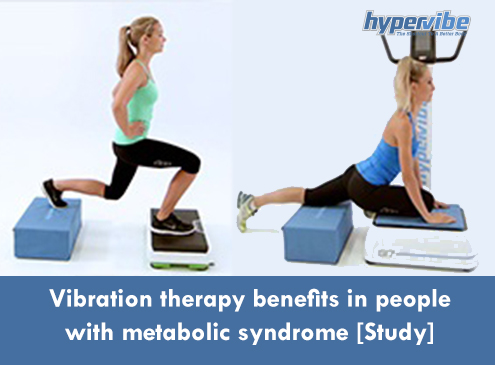
Whole body vibration activates the muscles in a way that induces improvements in strength and power performance, these improvements being similar to those observed with strength training, Cardinale and Bosco have shown in a paper published in 2003 in the journal of Exercise and sport sciences reviews.
In a more recent study, vibration training was found to increase flexibility in patients with metabolic syndrome, being a safe and time-efficient alternative to conventional workouts for this group of people.
The study that will be discussed in this article was published in the Journal of Rehabilitation Research and Practice and used an oscillating platform with an initial frequency of 5Hz. The vibration bouts lasted for 1 minute, and amplitude varied between 2 mm and 7 mm. Several rounds of WBV movements (standing or sitting) were performed, the frequency increasing with one Hz in each round, until it reached 14Hz.
This wasn’t the only research paper to prove the efficiency of vibration exercises in improving flexibility but deserves special attention as in metabolic syndrome patients, flexibility and the overall physical performance tend to decrease as a result of a sedentary lifestyle.
Although not all mechanisms that lead to the improvement of flexibility in patients with metabolic syndrome are understood, it is believed that the suppression of the central nervous system that results from a decrease in motor neuron excitability, as well as the decrease in pain sensation and muscular stiffness, may be involved in this favorable effect of WBV.
A collection of conditions that occur together, increasing the risk of diabetes, heart disease, and stroke, the metabolic syndrome affects one’s body in profound ways. It leads to an increase in blood sugar levels and blood pressure, favors the accumulation of excess body fat around the waist, and leads to an increase in the levels of cholesterol. Increased thirst and urination, fatigue and blurred vision, as well as an increased waist circumference, can signal the presence of this syndrome.
Metabolic syndrome is caused by inactivity and obesity, being linked to insulin resistance. When the body no longer responds properly to insulin and sugar can’t be transported to cells for energy production, it remains in the bloodstream, resulting in increased blood glucose levels. This can trigger both metabolic syndrome and diabetes if the body becomes unable to produce enough insulin for keeping glucose levels within the normal range.
Still, note that having only one symptom or one of the mentioned conditions doesn’t mean you have metabolic syndrome. It just means you are more likely to develop it and to experience its unpleasant complications.
The damage of the blood vessels may lead to heart disease and stroke; the increase in triglyceride levels makes one more prone to cardiovascular diseases, and the altered insulin production can lead to diabetes, eye, nerve, and kidney problems. Consequently, an impaired kidney function can cause high blood pressure and increase the risk of stroke.
These unpleasant health effects can be prevented by staying active and practicing physical exercises daily, as well as by keeping blood sugar levels under control and watching your waist circumference.
Have something to add to this article? Comment below or join our Facebook community and share your thoughts with us!

Updated on: 08.09.2021 The lymphatic system is involved not only...

Stress can make you gain weight – we’ve heard this...

Various theories exist to answer this question. As you will...

Both rebounding and jumping on a trampoline are excellent ways...

Our series of whole body vibration machine exercise articles continues...